Key facts from our report
A transcript of this video is available to download with the other files on this page.
by Auditor General, Accounts Commission
Progress on closing the poverty-related attainment gap between the most and least deprived school pupils has been limited. And more evidence is needed to understand educational achievement beyond exams.
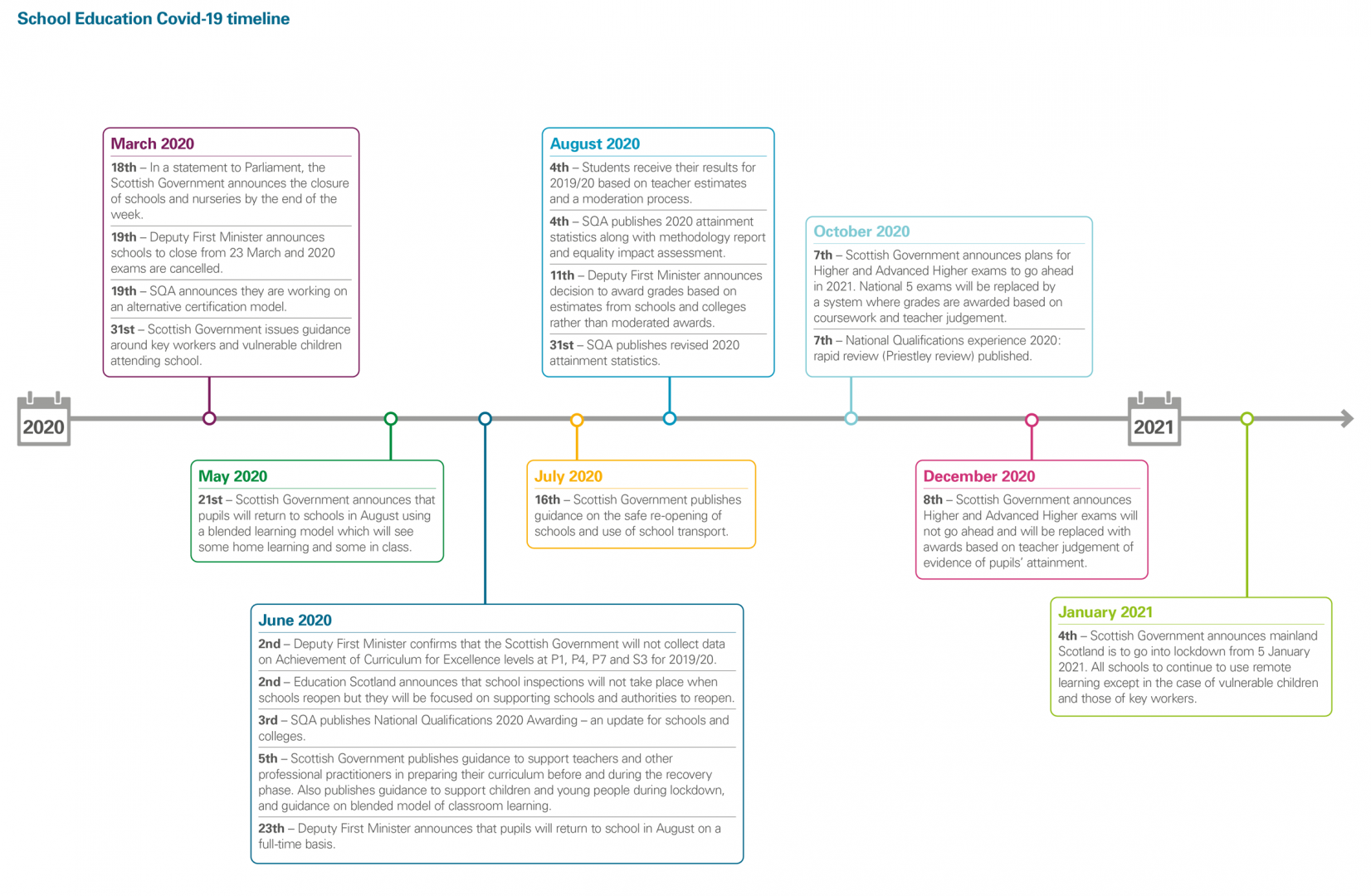
School Education Covid-19 timeline
Open Timeline as a PDF - PDF 42Kb Open Timeline as an image - PNG 217Kb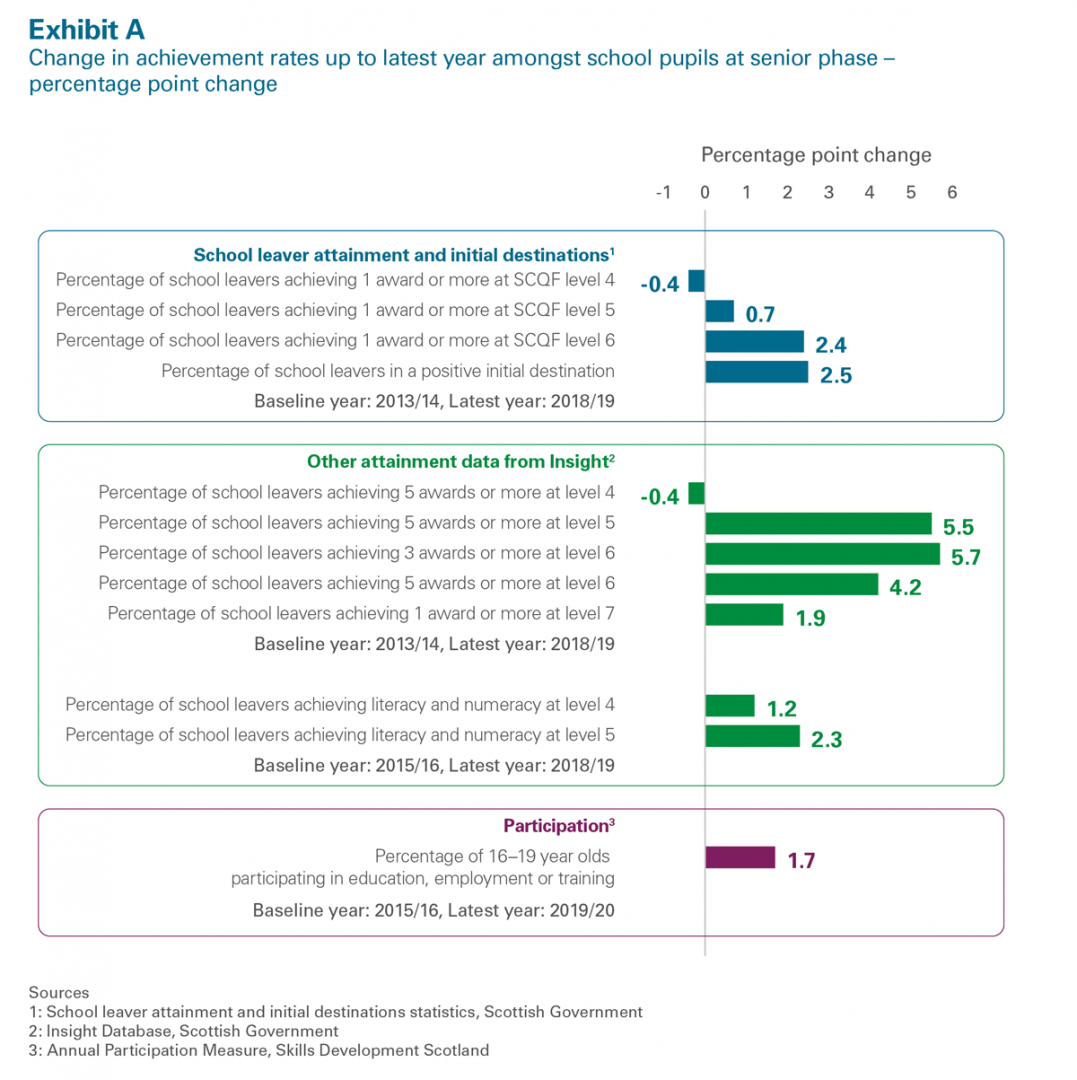
Change in achievement rates up to latest year amongst school pupils at senior phase – percentage point change
Open Exhibit A as a PDF - PDF 78Kb Open Exhibit A as an image - PNG 106Kb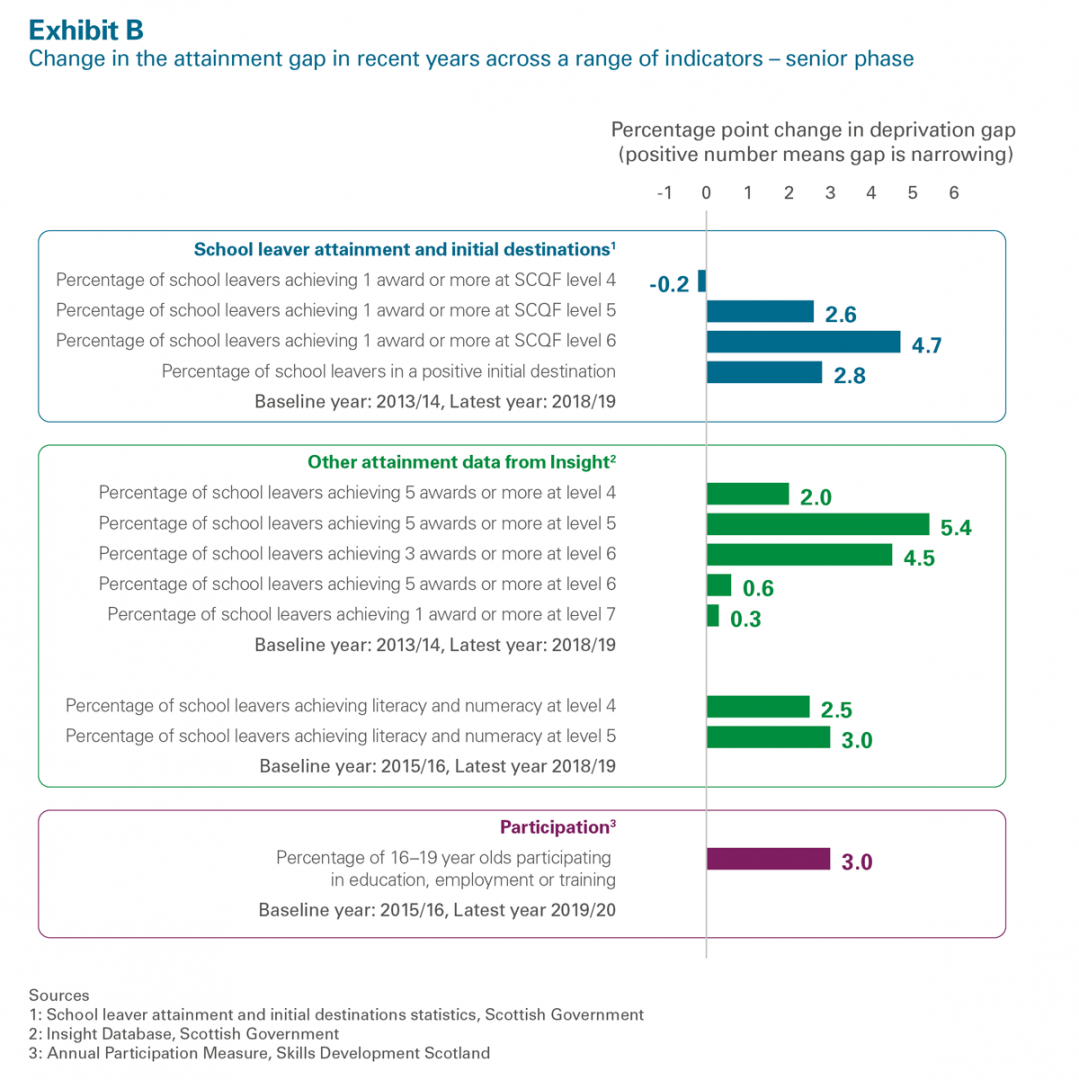
Change in the attainment gap in recent years across a range of indicators – senior phase
Open Exhibit B as a PDF - PDF 76Kb Open Exhibit B as an image - PNG 112Kb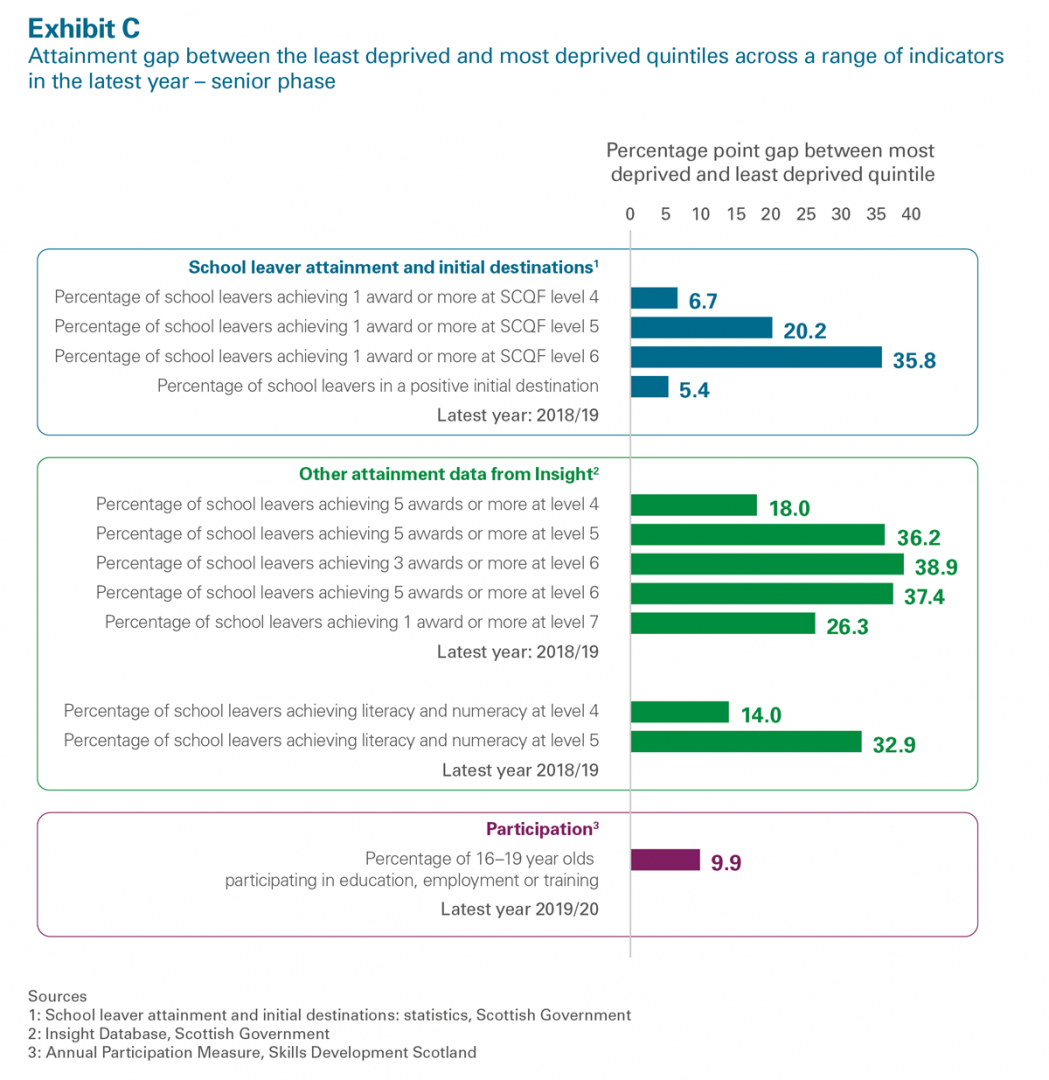
Attainment gap between the least deprived and most deprived quintiles across a range of indicators in the latest year – senior phase
Open Exhibit C as a PDF - PDF 85Kb Open Exhibit C as an image - PNG 109Kb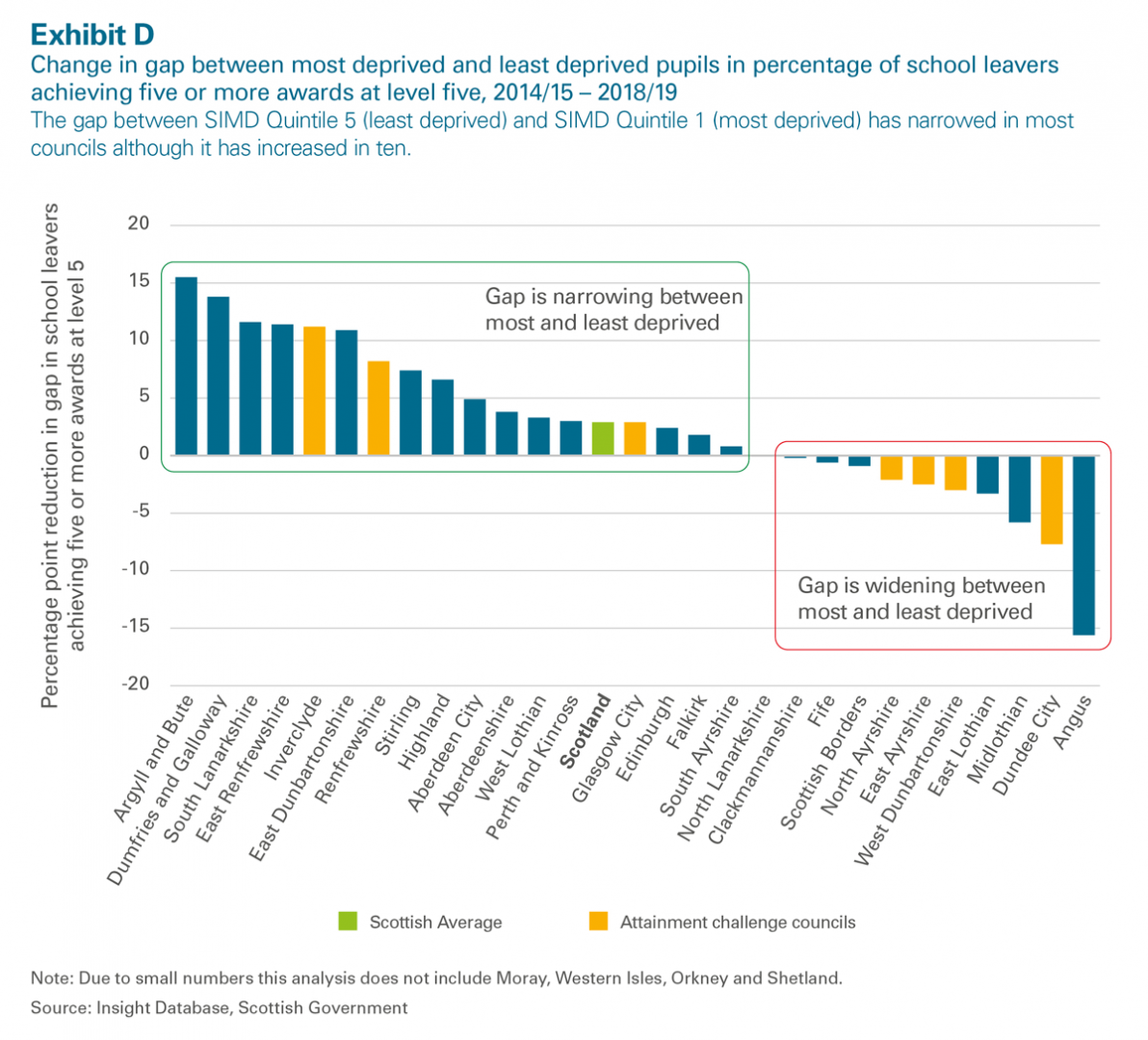
Change in gap between most deprived and least deprived pupils in percentage of school leavers achieving five or more awards at level five, 2014/15 – 2018/19
Open Exhibit D as a PDF - PDF 78Kb Open Exhibit D as an image - PNG 97Kb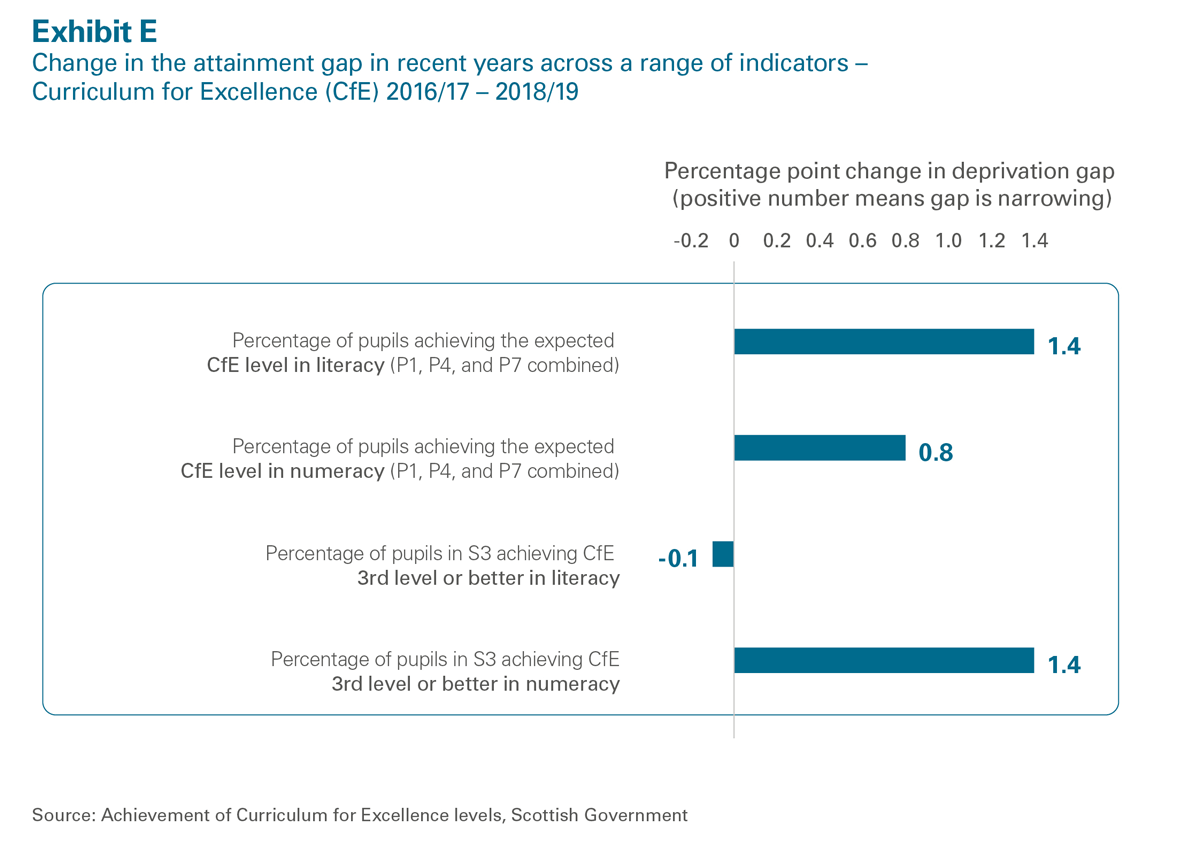
Change in the attainment gap in recent years across a range of indicators – Curriculum for Excellence (CfE) 2016/17 – 2018/19
Open Exhibit E as a PDF - PDF 76Kb Open Exhibit E as an image - PNG 55KbA transcript of this video is available to download with the other files on this page.
A transcript of this video is available to download with the other files on this page.
If you require a publication in an alternative format, or want to find out about the types of correspondence we deal with, please click the button below.